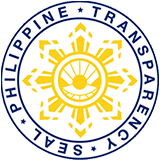Social welfare as a basic function of the state was a concept that materialized only after the Second World War, although different groups were undertaking pockets of social work in the first decade of the American occupation in the country. After the war, the Philippine government gradually assumed the major responsibility for social welfare.
1915 – The Public Welfare Board (PWB) was created. Its functions were to study, coordinate and regulate all government and private entities engaged in social services.
1921 – The PWB was abolished and replaced by the Bureau of Public Welfare under the Department of Public Instruction.
1939 – Commonwealth Act No. 439 created the Department of Health and Public Welfare
1941- The Bureau of Public Welfare officially became a part of the Department of Health and Public Welfare. In addition to coordinating services of all public and private social welfare institutions, the Bureau also managed all public child-caring institutions and the provision of child welfare services.
1947 – President Manuel A. Roxas abolished the Bureau of Public Welfare and in its place created the Social Welfare Commission (SWC) under the Office of the President.
1948 – President Elpidio Quirino created the President’s Action Committee on Social Amelioration (PACSA) to effect socio-economic reforms in the countryside to counteract social unrest.
1951 – The SWC and PACSA were merged into the Social Welfare Administration (SWA) which marked the beginning of an integrated public welfare program.
1968 – Republic Act 5416 known as the Social Welfare Act of 1968 elevated the SWA into a Department, placing it under the executive branch of government in equal status with other social agencies like health and education.
1976 – The Department of Social Welfare was renamed Department of Social Services and Development (DSSD) with the signing of Presidential Decree No. 994 by President Ferdinand E. Marcos. It gave the Department a more accurate institutional identity, in keeping with its productivity and developmental thrusts.
1978 – The DSSD was renamed Ministry of Social Services and Development (MSSD) in line with the change in the form of government, from presidential to parliamentary.
1987 – The MSSD was reorganized and renamed Department of Social Welfare and Development (DSWD) under Executive Order 123 signed by President Corazon C. Aquino. Executive Order No. 292, also known as the Revised Administration Code of 1987, established the name, organizational structure and functional areas of responsibility of DSWD and further defined its statutory authority.
1991 – The passage of Republic Act 7160 otherwise known as the Local Government Code of 1991 effected the devolution of DSWD basic services to local government units.
1998 – President Joseph Ejercito Estrada issued Executive Order No. 15 “Redirecting the Functions and Operations of the Department of Social Welfare and Development” to strengthen the DSWD’s repositioning efforts that began soon after the implementation of the Local Government Code of 1991.
2003 – President Gloria Macapagal Arroyo issued Executive Order No. 221 amending Executive Order No. 15 which defined the mandate, roles, powers and functions of the DSWD.
2005 – The Department of Budget and Management (DBM) approved the DSWD’s Rationalization and Streamlining Plan (RSP) on January 28, 2005 for implementation over the next five years. The RSP emphasizes the Department’s shift in policy, functions and programs in line with its steering role.



